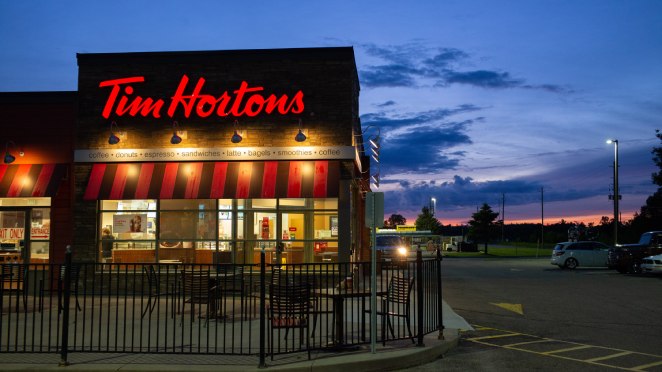
Homo sapiens or Humans in easy language are surely the only species that knows what to eat and most importantly how to eat. Using the formula of ‘how to eat for more taste’, a Canadian franchise, Tim Hortons is currently ruling the nation. But do you know how Tim Hortons started? And how did it become such a successful global food chain? Let us discuss Tim Hortons in detail.
Tim Hortons was founded by a Canadian hockey player Tim Horton along with Jim Charade in 1964 in Hamilton, Ontario. In 1967, Tim Horton partnered with an investor Ron Joyce, who took control over the company after Horton died in 1974 in a crash. Joyce expanded the chain into a multi-billion dollar franchise.
Also Read: Here’s Why Popcorns & Snacks Are So Expensive In Cinema Halls!
According to Wikipedia, Tim Hortons is Canada’s largest quick-service restaurant chain. The franchise has opened 5,287 restaurants in 15 countries among which 3,593 restaurants are in Canada only. Being more specific, Tim Hortons has 1,777 stores in Ontario only, which is accessible to 14.45 million people, which means for every 8,129 people there’s a distinct restaurant in Ontario. Tim Hortons is also very popular in the United States, where it has opened over 800 restaurants so far.

In becoming such a successful franchise, the factor that helped Tim Hortons the most is their brilliant and unique business model and strategy. Tim Hortons Chain targets every foodie and coffee lover and thus it follows a unique marketing pattern. Its stores claim to be one of the Canadian heritage places in its commercials, which eventually attracts a good number of customers. Customers always have different tastes, this is why Tim Hortons strives to achieve this in several ways by providing a variety of products.

The products that it deals in are; whole donut named Timbit, which is available in more than 35 varieties, cakes, muffins, pies, croissants, cookies, soups, among others. They also serve cans of hot chocolate, English toffee, French vanilla cappuccinos that make guests and all the several customers enjoy such products at home. As their service looks very sorted and effective, the work environment and company’s demographics must have played a pivotal role for its success.
Also Read: Pizza Worth ₹10 Lakh!! Why Is This So Expensive? Here’s The Reason
According to Reviewlution.ca, Tim Hortons’ main focus is on families, and the brand sponsors children’s sports teams and often offers free camp, skate, and swim days. Its marketing strategy also appeals to students by offering free Wi-Fi and a quick, affordable lunch or a snack. Tim Hortons main target audience is business people, working adults, families and students from lower and middle class.
This is the reason why the Canadian franchise has entered the Indian market as well. And the queues outside these Tim Hortons Indian outlets are enough to justify its popularity among Indians.

Now it’s time to mention its income, because that is what matters the most in a business. According to a statista.com report, Tim Hortons has collected a total revenue of 3.34 billion US$ in the year 2021. The same report has revealed the net income of Tim Hortons which was 997 million US$ by the end of 2021 with its total assets costing around 13.99 US$.

As per Expendedramblings.com, Tim Hortons sold products of US$6.526 billion in 2021, while its annual sales grossed US$5.488 billion in 2020, $6.716 billion in 2019, $6.869 billion in 2018, $6.717 billion in 2017, $6.405 billion in 2016, $6.349 billion in 2015 and $6.616 billion in the year 2014.
Also Read: Not Selling Burgers But THIS Is McDonald’s Main Business
These stats are enough to show how big Tim Hortons’ market size is and must have satisfied your curiosity to know how Tim Hortons became such a successful franchise, right?




